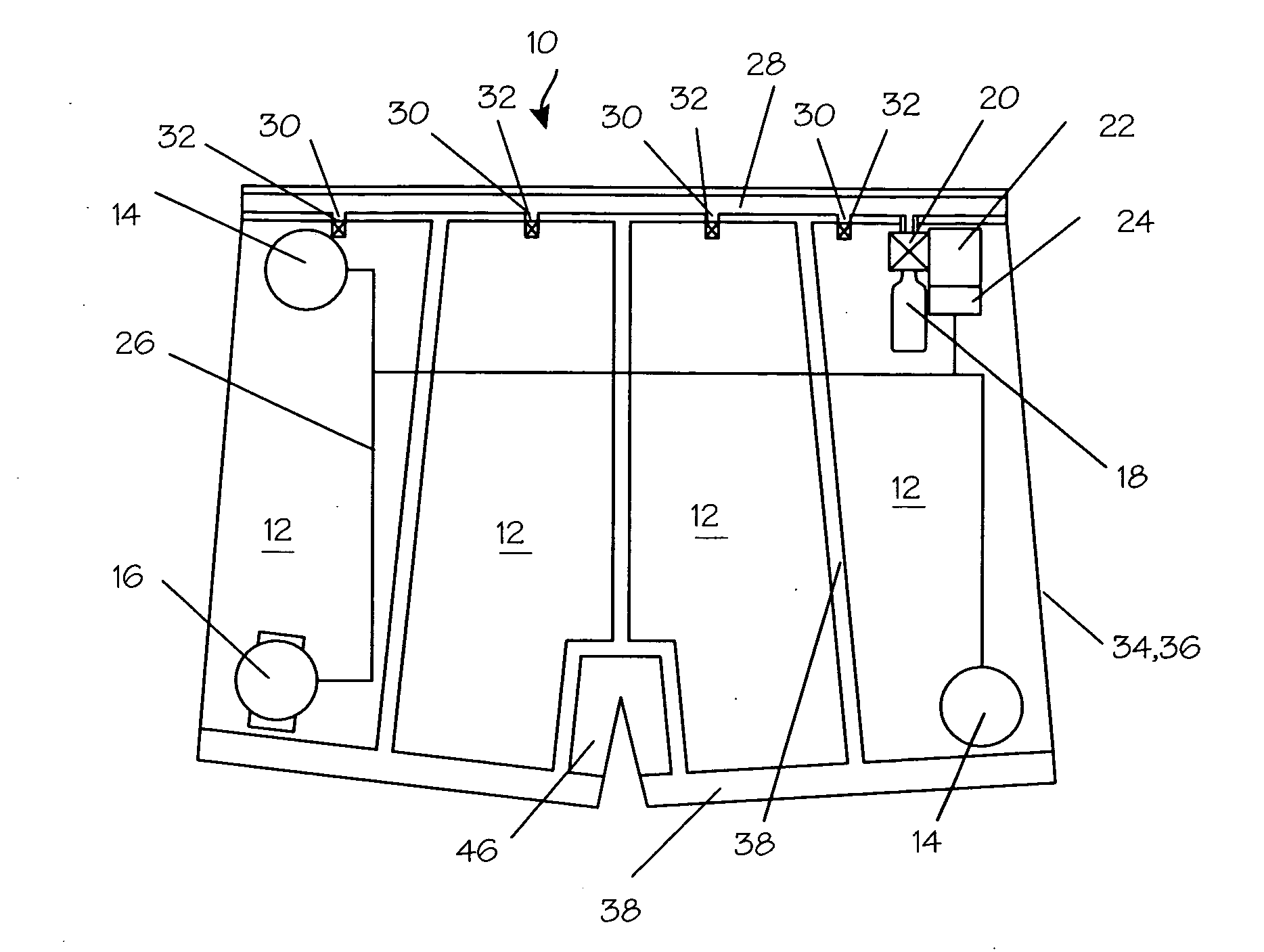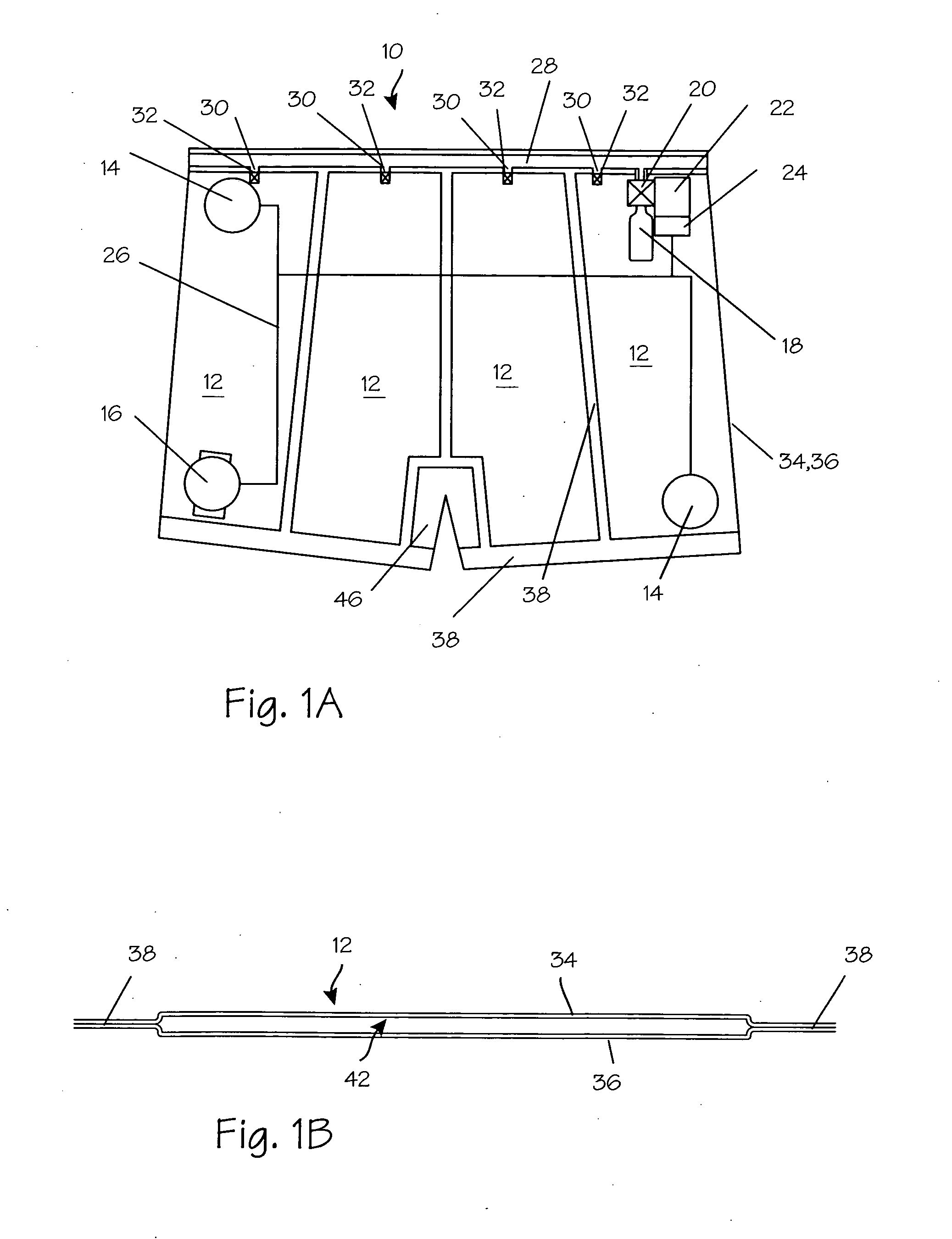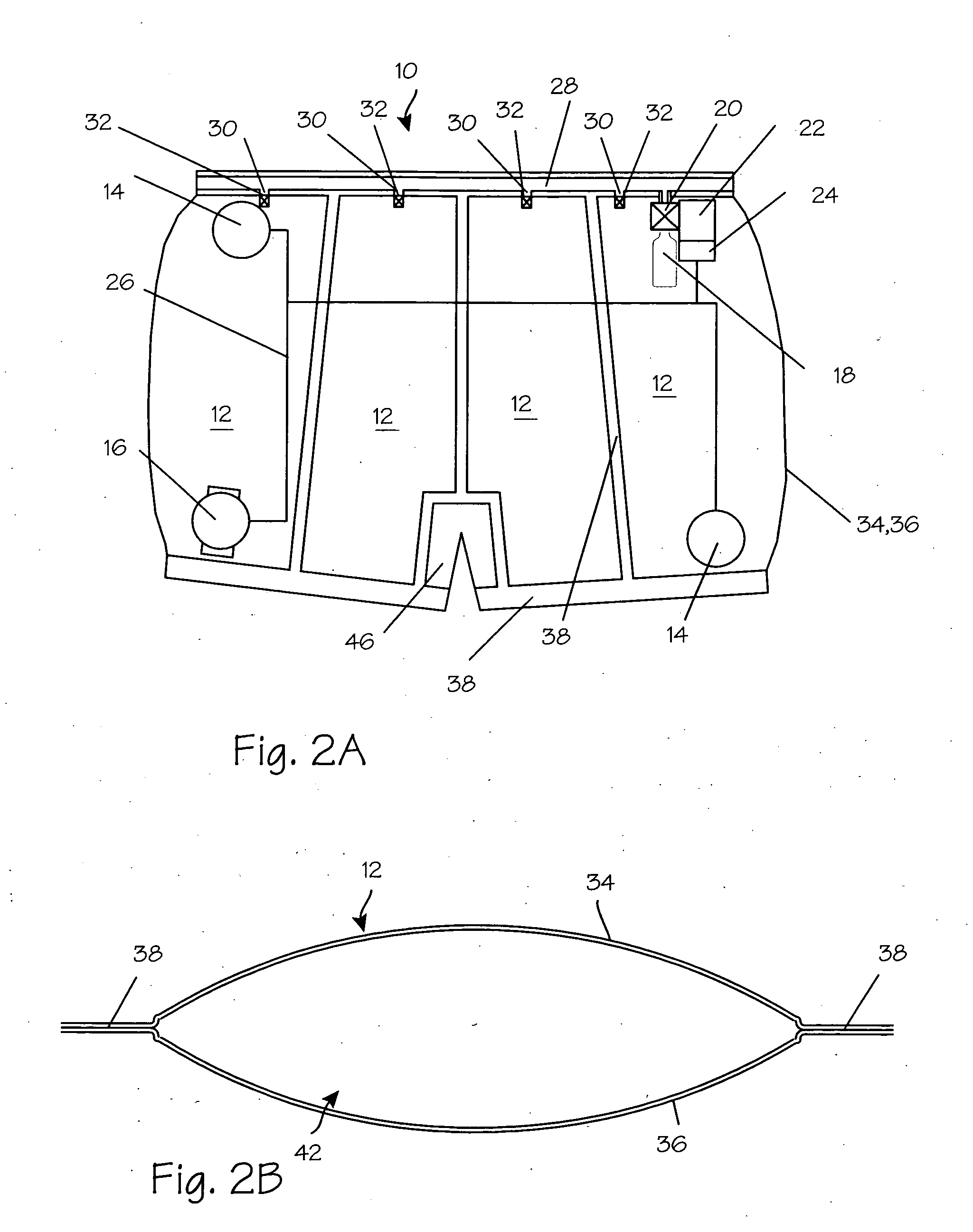Method and apparatus for body impact protection
a technology of body impact and apparatus, applied in the field of body impact protection, can solve the problems of serious injuries, fractures, and impact, and achieve the effects of minimizing torsion, compressive or bending stresses, stabilizing the neck, and minimizing neck injuries
- Summary
- Abstract
- Description
- Claims
- Application Information
AI Technical Summary
Benefits of technology
Problems solved by technology
Method used
Image
Examples
Embodiment Construction
[0075]FIG. 1A illustrates pair of deflated APG shorts 10. The APG shorts 10 comprise a plurality of chambers 12, a plurality of accelerometers 14, one or more optional gyroscope 16, a high pressure or compressed source of gas 18, a logic controller 22, a battery 24, an electrical bus 26, a manifold 28, a plurality of chamber inlet ports 30, and a plurality of one-way valves 32. The APG shorts can optionally have an actuator valve 20. The chambers 12 can further comprise two layers of gas impermeable wall 34 and 36, a plurality of seals 38 and one or more non-inflatable regions 46.
[0076] The chambers 12 are isolated regions within the APG shorts 10 that cushion the impact between the wearer and the object being hit by the wearer. The chambers 12 are connected to the high pressure or compressed gas source 18 by a manifold 28. A valve 20 may be contained to control and enable the gas flow from the compressed gas source 18 to the manifold 28. The entry to each chamber 12 is a chamber i...
PUM
 Login to View More
Login to View More Abstract
Description
Claims
Application Information
 Login to View More
Login to View More - R&D
- Intellectual Property
- Life Sciences
- Materials
- Tech Scout
- Unparalleled Data Quality
- Higher Quality Content
- 60% Fewer Hallucinations
Browse by: Latest US Patents, China's latest patents, Technical Efficacy Thesaurus, Application Domain, Technology Topic, Popular Technical Reports.
© 2025 PatSnap. All rights reserved.Legal|Privacy policy|Modern Slavery Act Transparency Statement|Sitemap|About US| Contact US: help@patsnap.com



